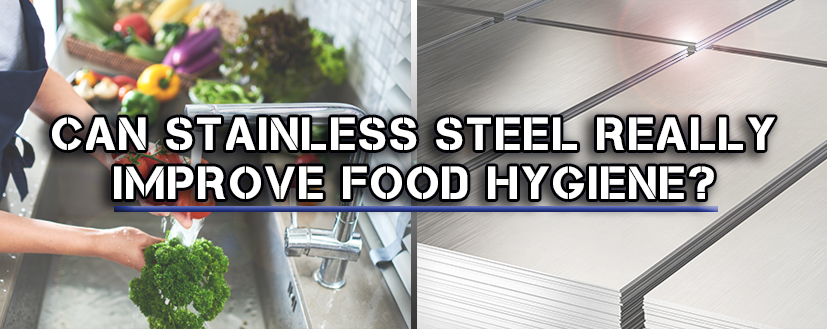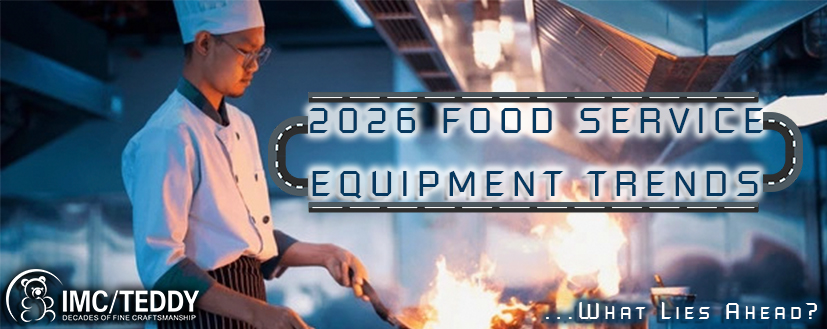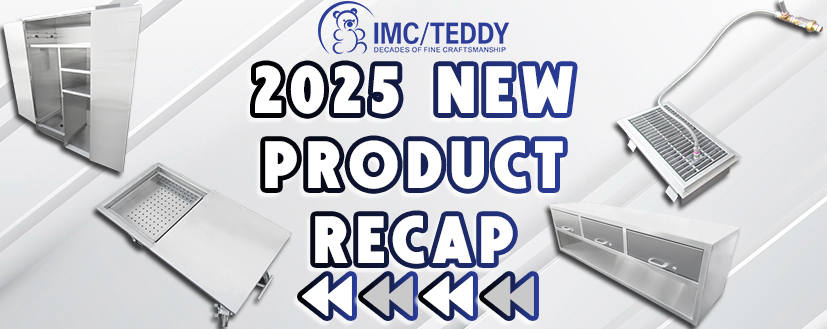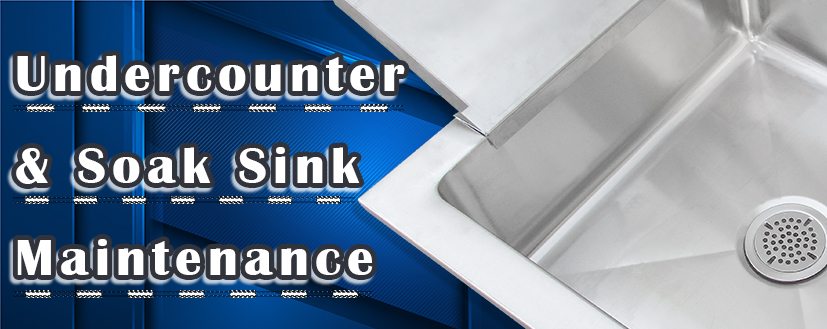Can Stainless Steel Really Improve Food Hygiene?

Salmonella. E. coli. Listeria. Norovirus.
These four germs, among others, can spell catastrophe for the average diner. In fact, the CDC estimates that each year 48 million people get sick from foodborne illness, 128,000 are hospitalized & 3,000 die. These numbers appear alarming, but food poisoning can be severely diminished just by utilizing stainless steel. How exactly?
In this article, we’ll go over several key facts about the hygienic properties of stainless steel. We’ll then give some real world examples of how stainless steel is playing its part in keeping food hygiene intact. Let’s start.
But First…
Although stainless steel does contain hygienic properties, it is NOT inherently antimicrobial. This means, just like any other surface, it should be cleaned & sanitized regularly. In a commercial kitchen environment where food & safety regulations are in play, this is even more important.
Stainless Steel – The Super Metal
With that out of the way – stainless steel is indeed the ultimate hygienic metal. How?
It may come as a surprise, but stainless steel is one of the most sanitary metals in the entire world. It is considered a “green” material – meaning it is 100% recyclable with no loss in value. Even if stainless steel is not recycled & it does find its way to a landfill or disposal site, it will have no harmful effect to the soil or groundwater.
Furthermore, stainless steel is naturally non-porous. This means no dirt; grime or bacteria can be latched onto the metal. This is especially important when cooking with food products such as raw meat where surface contamination is a real risk.
Unlike other materials such as copper & aluminum, stainless steel is also generally immune to most of the acids released by cooked foods & spices. Also, stainless steel does not normally get pitted, therefore avoiding the chance for bacterial infection.
Most importantly – stainless steel is corrosion resistant. That means a decreased chance of rusting. As we all know, rust is a severe health hazard. After all, no one wants to accidentally ingest rust or cut themselves on rusty objects.
Real World Examples
A. Cooking Utensils – Stainless steel cooking utensils are a smart investment. Because of their cleanliness & corrosion resistance, they can last for decades. Remember that stainless steel is non-porous so bacteria will not embed in your utensils.
B. Compartment Sinks – Compartment sinks get into contact both with dishes/food & must therefore meet the highest hygienic standards. Since stainless steel does not develop cracks or absorb acids, having a lineup of scullery sinks is a smart play for any commercial environment.
C. Prep Tables – If you have to perform prep tasks such as washing vegetables or chopping ingredients, you will need to utilize a smooth work top surface. Stainless steel is the ideal candidate for this since clean up can be performed with no more than a soft rag, water & soap.
IMC has been manufacturing food service equipment for the last 6+ decades using the highest quality type 300 series stainless steel. Thanks to its corrosion resistance, strength & recyclability, stainless steel will continue to be the preferred material in maintaining proper food hygiene in food-related environments across the globe. For a closer look at our mission, click here.




